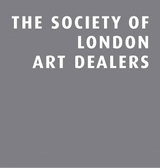Óscar Dominguez (1906 - 1957)
- AVAILABLE ARTWORKS FOR SALE
For more available works please contact us on stern@pissarro.com or +44 (0)20 7629 6662.
 Óscar Dominguez, Autorretrato, 1926
Óscar Dominguez, Autorretrato, 1926
Spanish artist Oscar Dominguez was born at Tenerife in the Canary Islands to a prosperous agriculturist and a mother who died of when he was only a year old. Mostly brought up by his sisters and his grandmother, at the age of three he fell ill with Sydenham’s chorea leaving him bedridden for the following two years. It was after his recovery that he began drawing and painting. Of his cultured father, Dominguez would gratefully declare “Il etait agronome, ingenieur, peintre, mecanicien. C’est lui qui m’a d’ailleurs appris a peindre” (He was a farmer, engineer, painter, and technician. It was he who taught me to paint). It was his well-travelled father who brought Dominguez presents like cameras, binoculars, and telescopes from across Europe. At the age of twelve Dominguez began studying at the Instituto de Segunda Ensenanza de La Laguna in Tenerife, although he eventually left without sitting his final exams.
Sent at the age of nineteen by his father to Paris to run the family business there, Dominquez soon immersed himself in the rich and exciting nightlife of 1920s Paris, later beginning an affair with the Polish pianist Roma. Initially belonging to the Spanish literary and artistic group 'Generacion del 27', from his studio in Montmatre during the 1930s Dominguez became integral to the Surrealist movements inner circle. He regularly began exhibiting his work, notably at the Surrealist’s London exhibition of 1936. Whilst he often used vivid colour, much of his work is dark and grotesque (particularly a 1931 self-portrait showing his deformed arms with wrists cut open; a frightening presage of his later suicide).
Visiting Barcelona at the outbreak of the Spanish Civil War, Dominguez fled to Tenerife from whence he was able to return to France with false papers on a boat transporting fruit. His work began undergoing changes at around this time, experimenting with 'Decalcomania' a technique by which engravings and prints are transferred to pottery or other materials, his work increasingly influenced by Picasso. Escaping to Marseille at the outbreak of the Second World War, he returning in to Paris in 1945 when he married the artist Maud Bonneaud and formally broke with the Surrealists. The influence of Picasso is particularly evident in Composición con Fondo Azul (1949) and Corrida II and Tauromaquia (both 1951). In 1952, Dominguez began an affair with Marie-Laure, Viscountess of Noaille. However, at the same time he began suffering from acromegaly, leaving him in pain and delirium. In his depression, and in the midst of a party at Marie-Laure’s home, Dominguez committed suicide by retiring to her bathroom and slitting his veins.
Read more
Sent at the age of nineteen by his father to Paris to run the family business there, Dominquez soon immersed himself in the rich and exciting nightlife of 1920s Paris, later beginning an affair with the Polish pianist Roma. Initially belonging to the Spanish literary and artistic group 'Generacion del 27', from his studio in Montmatre during the 1930s Dominguez became integral to the Surrealist movements inner circle. He regularly began exhibiting his work, notably at the Surrealist’s London exhibition of 1936. Whilst he often used vivid colour, much of his work is dark and grotesque (particularly a 1931 self-portrait showing his deformed arms with wrists cut open; a frightening presage of his later suicide).
Visiting Barcelona at the outbreak of the Spanish Civil War, Dominguez fled to Tenerife from whence he was able to return to France with false papers on a boat transporting fruit. His work began undergoing changes at around this time, experimenting with 'Decalcomania' a technique by which engravings and prints are transferred to pottery or other materials, his work increasingly influenced by Picasso. Escaping to Marseille at the outbreak of the Second World War, he returning in to Paris in 1945 when he married the artist Maud Bonneaud and formally broke with the Surrealists. The influence of Picasso is particularly evident in Composición con Fondo Azul (1949) and Corrida II and Tauromaquia (both 1951). In 1952, Dominguez began an affair with Marie-Laure, Viscountess of Noaille. However, at the same time he began suffering from acromegaly, leaving him in pain and delirium. In his depression, and in the midst of a party at Marie-Laure’s home, Dominguez committed suicide by retiring to her bathroom and slitting his veins.

